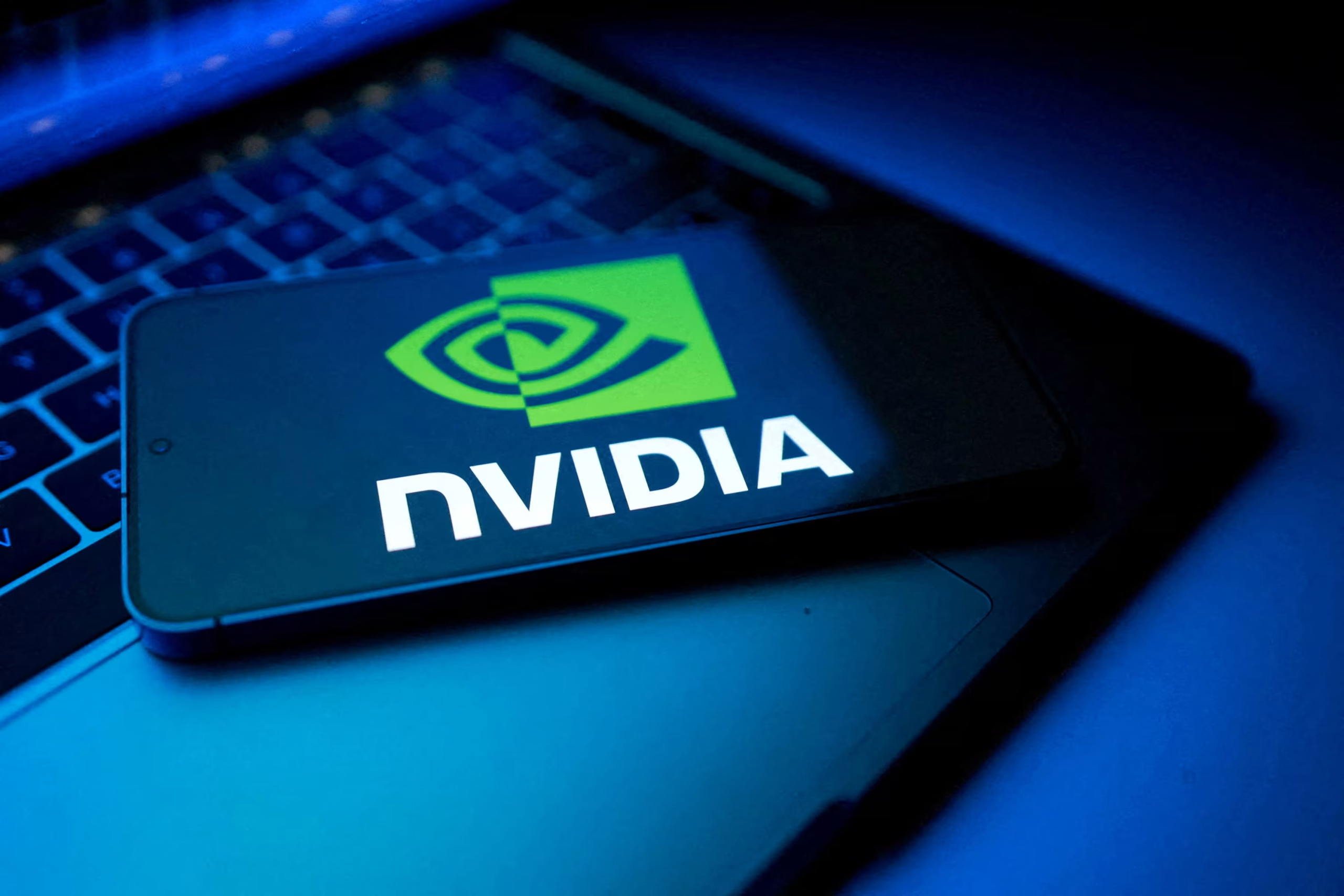Nvidia’s next earnings announcement has triggered heavy positioning in derivatives markets, as traders prepare for a potential volatility shock across AI-linked equities.
The scale of the options activity highlights broader concerns about liquidity, index concentration, and how a single company’s results can influence capital allocation across global technology portfolios.
Market Impact: When Index Concentration Drives Volatility
Nvidia’s weight in major equity benchmarks means any earnings-driven move can have an outsized effect on index behaviour and short-term sentiment.
With large-cap technology names representing a significant share of the S&P 500 and other global indices, their reporting cycles increasingly shape how risk is perceived across the market.
When options markets price in wider-than-usual swings, portfolio managers often adjust hedges across semiconductors, cloud infrastructure, and high-performance computing exposures. Those hedging flows can temporarily magnify market moves, even in the absence of fundamental deterioration or a shift in long-term outlook.
Governance Considerations: Communicating Risk at Mega-Cap Scale
Large-scale valuation sensitivity places additional emphasis on governance practices around disclosure and forward-looking commentary. For companies that sit at the centre of strategic technology supply chains, consistency in guidance, risk-factor language, and capacity-planning disclosures helps markets interpret results without overreacting to short-term uncertainty.
Boards and audit committees typically revisit communication frameworks during periods of heightened attention, ensuring that material information is presented clearly, grounded in existing reporting obligations, and aligned with established risk disclosures.
Regulatory Context: Oversight Around High-Impact Firms
While Nvidia is not the subject of a specific regulatory action in this context, firms with significant influence over benchmarks often operate under closer scrutiny regarding disclosure quality and market impact. Regulators such as the SEC regularly review how large-cap companies communicate material information, particularly when derivatives pricing reflects elevated uncertainty and heavy positioning around key dates.
This oversight focuses on transparency, fair access to information, and market integrity, rather than on the short-term direction of share prices. For companies with global investor bases, alignment between US and international disclosure standards is also an important consideration.
🟡 AI Bubble Fears Erupt After Nvidia’s Sudden Slide Triggers Wall Street Compliance Scramble
Sector Dynamics: AI Infrastructure Spending and Financial Sensitivities
Earnings from companies positioned at the core of AI computing often serve as informal indicators of broader enterprise-technology investment. In the semiconductor sector—characterised by long production cycles, high capital intensity, and complex supply chains—changes in demand visibility can influence expectations for cloud providers, component suppliers, and competing chipmakers.
Options activity around Nvidia reflects how closely investors link its performance to the trajectory of AI infrastructure spending. That sensitivity extends to adjacent areas such as data-centre build-out, networking hardware, and specialised software that depends on high-performance compute capacity.
Investor Risk & Reputation: The Volatility–Liquidity Feedback Loop
Large implied moves can influence liquidity conditions, particularly when systematic and passive strategies rebalance around high-weight constituents. When many participants hedge or adjust positions at the same time, bid–ask spreads can widen and intraday swings can become more pronounced.
If communication around demand outlook, supply constraints, or capital-expenditure planning is unclear, uncertainty can persist beyond the immediate results window and feed into risk assessments across adjacent technology segments. Reputation risk becomes relevant because companies viewed as sector benchmarks often help shape the narrative for an entire investment theme, including AI infrastructure and advanced semiconductors.
Explainer: Why Options Markets Intensify Events Like This
Options pricing reflects expected movement, not direction. Implied volatility typically rises around earnings when forward visibility is harder to assess, when guidance language is expected to carry added weight, or when passive and systematic funds are likely to adjust exposures.
Sector correlations also tend to increase during macro-sensitive periods, meaning that traders use options on a single, highly liquid name as a proxy for broader themes. Because Nvidia touches multiple investment areas—AI, cloud computing, data-centre infrastructure, and semiconductors—its implied volatility becomes a reference point for risk appetite across all of them, even for investors who hold it only through index or ETF exposure.
What Stakeholders Will Watch Next
Stakeholders will focus on the clarity of guidance, the visibility of demand across AI and data-centre spending categories, and how implied volatility behaves once the initial earnings event has passed. Observers will also monitor whether sector correlations remain elevated or normalise as markets absorb the updated information and reprice risk across the wider technology complex.
Frequently Asked Questions About Nvidia’s Earnings and Market Volatility
Does high implied volatility signal negative expectations?
No. It measures the expected size of potential price movement over a period, without indicating whether that movement is expected to be up or down.
Why can one company influence multiple sectors?
Large benchmark weight and cross-sector exposure mean its results inform sentiment across semiconductors, cloud computing, and AI infrastructure, especially for investors using indices and ETFs.
Why is disclosure quality so important for mega-cap firms?
Clear, consistent disclosure supports stable price discovery, helps limit information asymmetry, and underpins confidence among global institutional and retail investors.
How does this affect smaller technology suppliers?
Smaller suppliers often rely on demand signals and capex guidance from industry leaders, so changes in sentiment around core AI hardware providers can influence how their own risk profiles are perceived.














